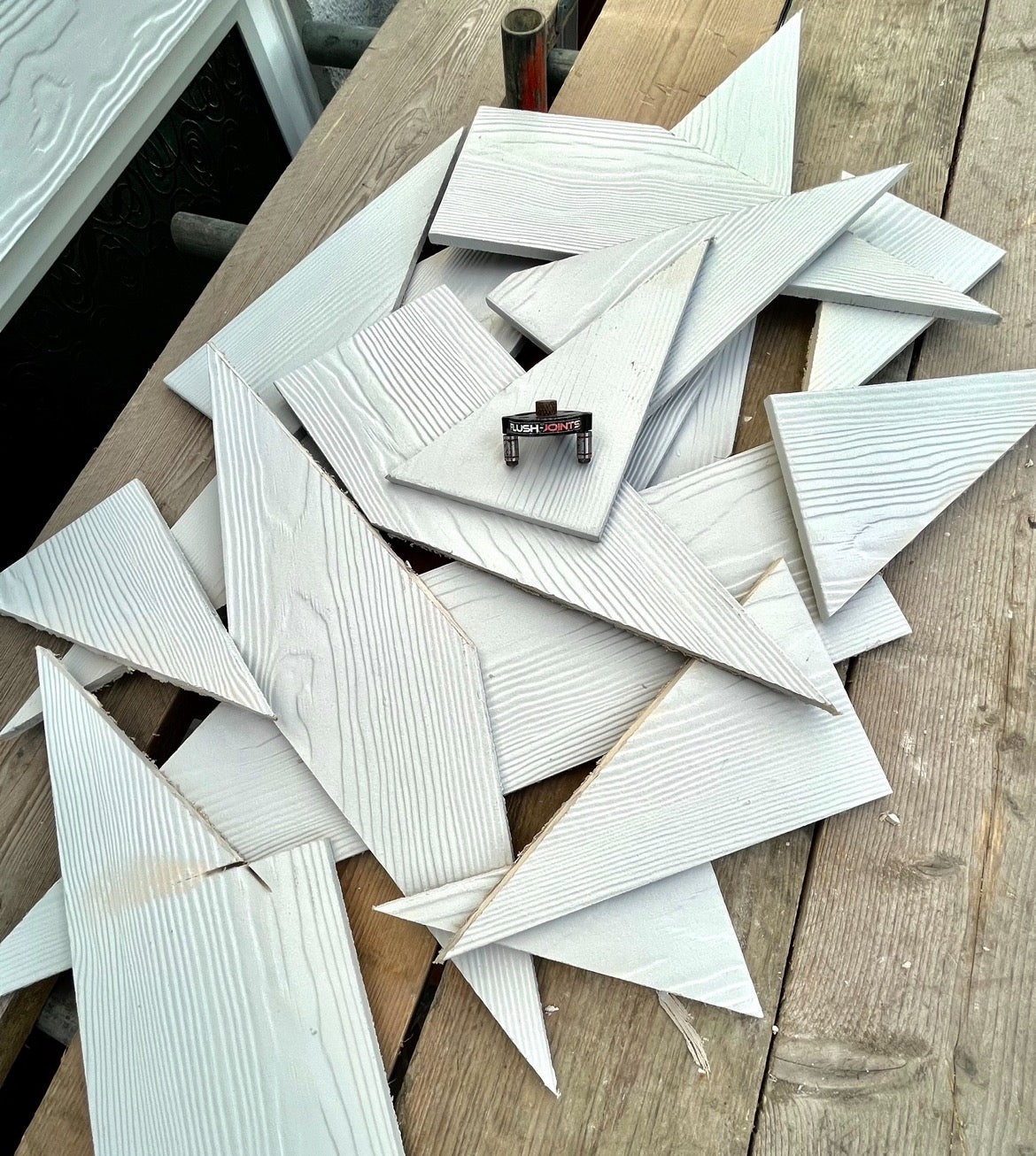
How to keep a lid on cladding costs
Quoting for cladding jobs is a competitive business.
I don’t usually want to be the very cheapest quote - we never cut corners on quality and our customers value that attention to detail.
But neither do I want to be the most expensive.
And that means I need to pay close attention to keeping my materials and labour expenses down - because for most jobs these make up at least half of the total cost.
I want to pay my crew fairly and I never opt for cheap materials. Instead, I focus on efficiencies: getting more out of the people and materials we have and reducing waste.
Here a few ways I do that which might give you some ideas...
Keeping a lid on labour costs
You usually need a minimum of three people on site: two people to fit boards (one holding and checking the level, and the other fixing) - plus another person cutting boards.
But we use the Sitebuddyz Cladman, which allows us to work with one person fitting and one cutting.
This is because the Cladman acts as an extra pair of hands.
Once the first board is positioned and secured in place, the Cladman is set up from that board.
Using the overlap guide provided with the Cladman, you can set the required overlap by selecting the relevant roller position and adjusting the lower legs. This step is only required once throughout the job.
To install boards, we fix the Cladman to a baton using the top securing screw, installing the second Cladman unit in the same manner at a position relevant to the board length. It’s then easy to slide the boards into position on the roller guide.
The boards are now held in place hands-free, allowing you to install with ease.
The net result is I can use fewer people on a single job and deploy my team to other jobs.
Reducing wastage from offcuts
The price of materials has been skyrocketing over the past few years. The cost of most cladding boards has increased by around 30% for example.
So reducing wastage from damaged boards or unnecessary offcuts can bring major savings and there are three main ways we do this:
1. Avoiding poor cutting techniques
If the boards are not cut properly, it can lead to wastage of boards. This can happen if the person cutting the boards is inexperienced, if the tools used for cutting are not of good quality or you have to make several attempts.
We use a variety of CladBlades in our power tools to ensure we always get a clean cut, whatever material we are using. They incorporate anti-vibration slots to improve cut finish and reduce resonance.

2. Ensuring proper installation
If the boards are not installed properly, it can lead to wastage of boards.
This can happen if the boards are nailed or screwed in too tightly or if the installation process is rushed.
You can easily end up with split end of boards when using nail guns, or if you fail to countersink before using screws, for example.
To avoid this we use the Sitebuddyz Drill-CSK COMBO. This is a combined tungsten carbide tipped drill bit and counter-sink tool which allows us to drill and countersink at the same time. The tungsten carbide tip also lasts a LOT longer on cement boards!
3. Precision drilling our dowel holes
Another common cause of wasted boards happens when two boards need to be joined using dowels. It’s easy to drill the holes for the dowels inaccurately and end up splitting the board.
To avoid this we use the Sitebuddyz Flush-Joints jig. This ensures every hole we drill is perfectly centred and at exactly the right depth.
All of these techniques and tools help us keep the cost of our cladding jobs down whilst ensuring we always get a perfect finish. The other benefit is that we don't end up wasting an extra day or two at the end of the job on snagging stuff that was done badly.
Hopefully useful thoughts and ideas!
Cladding: Better. Faster. Cheaper. Job done!
